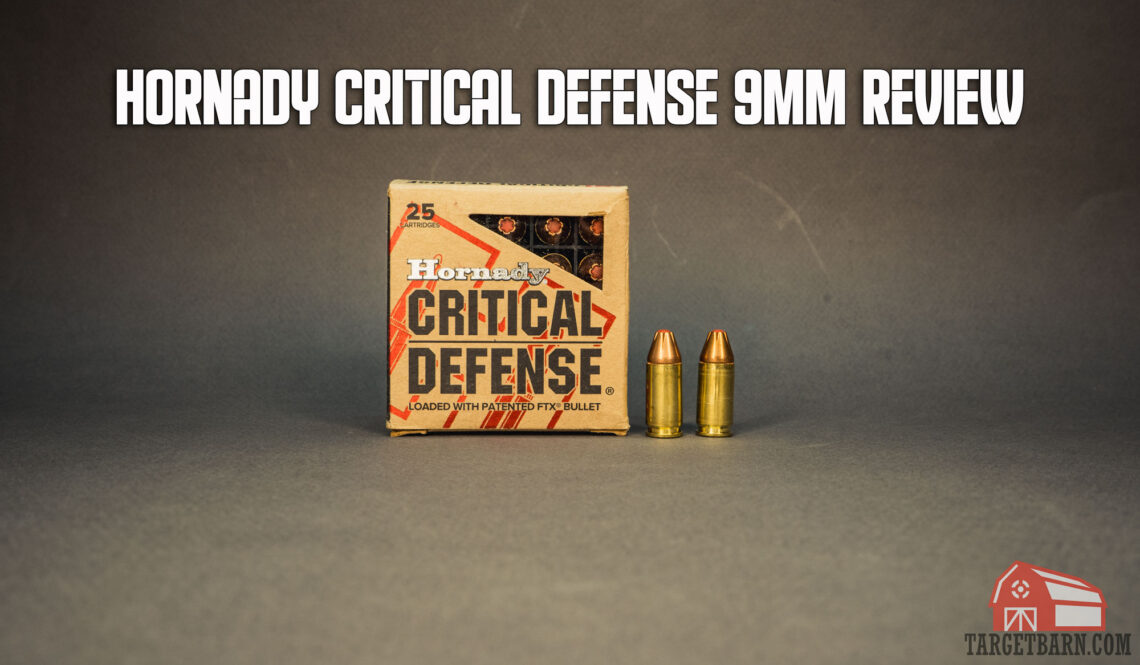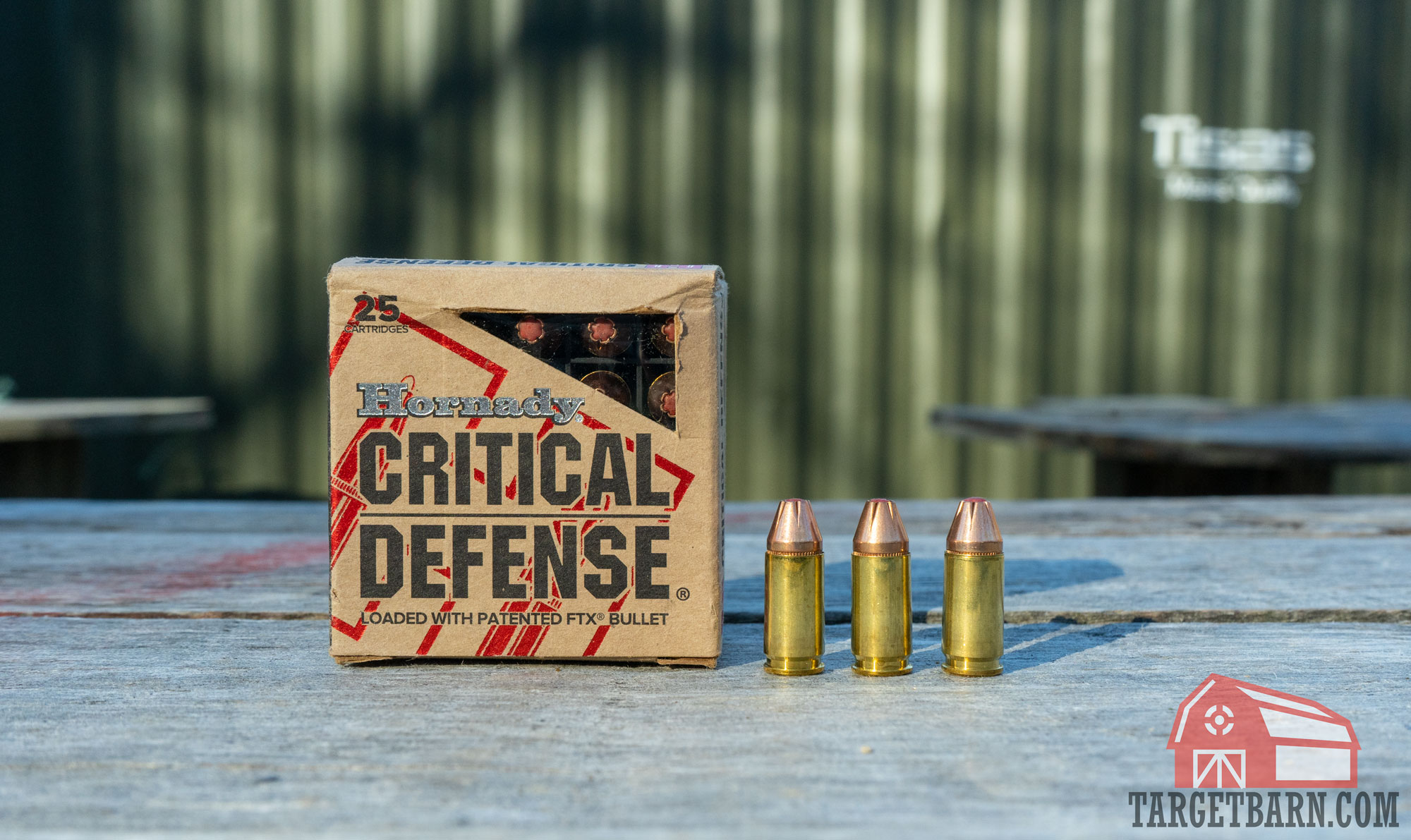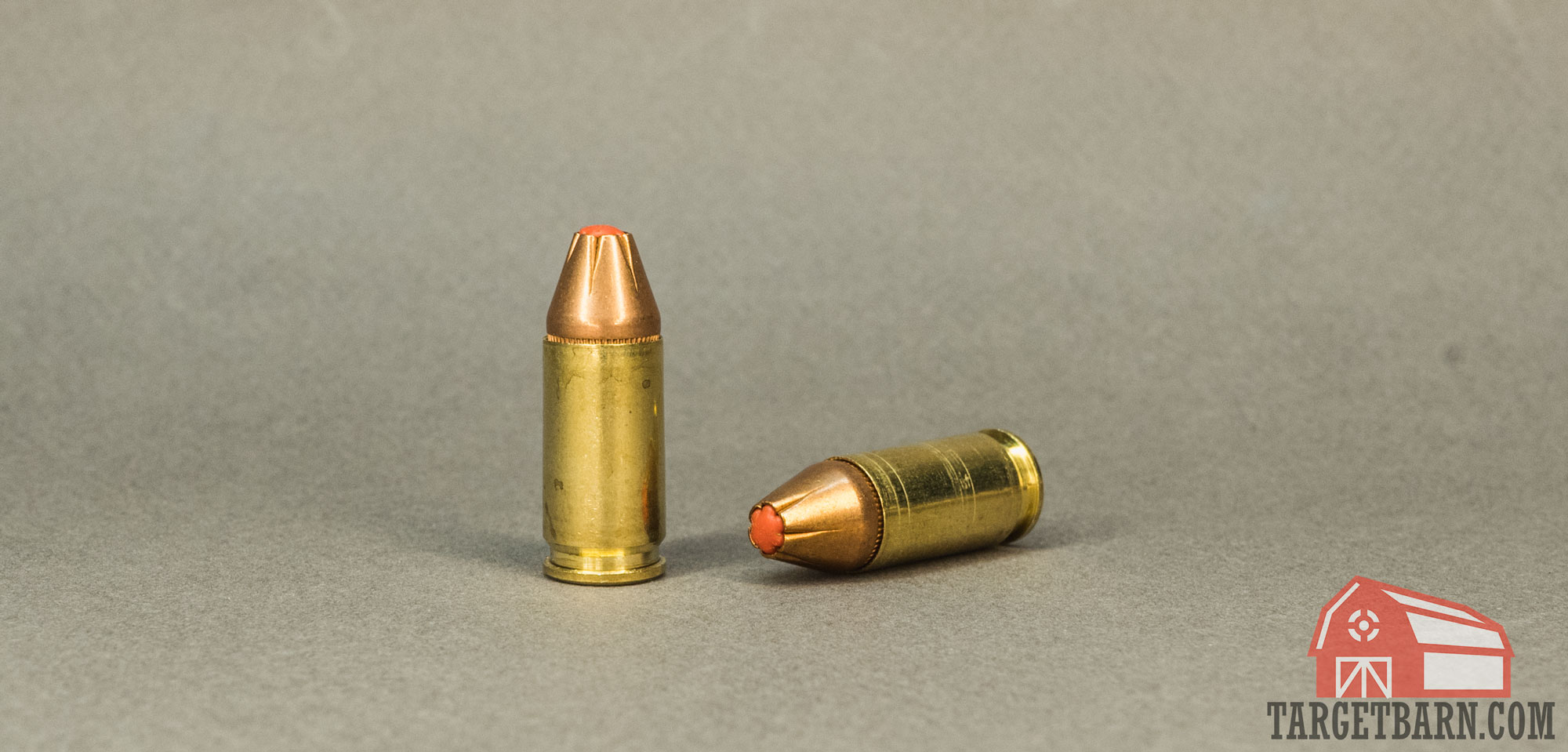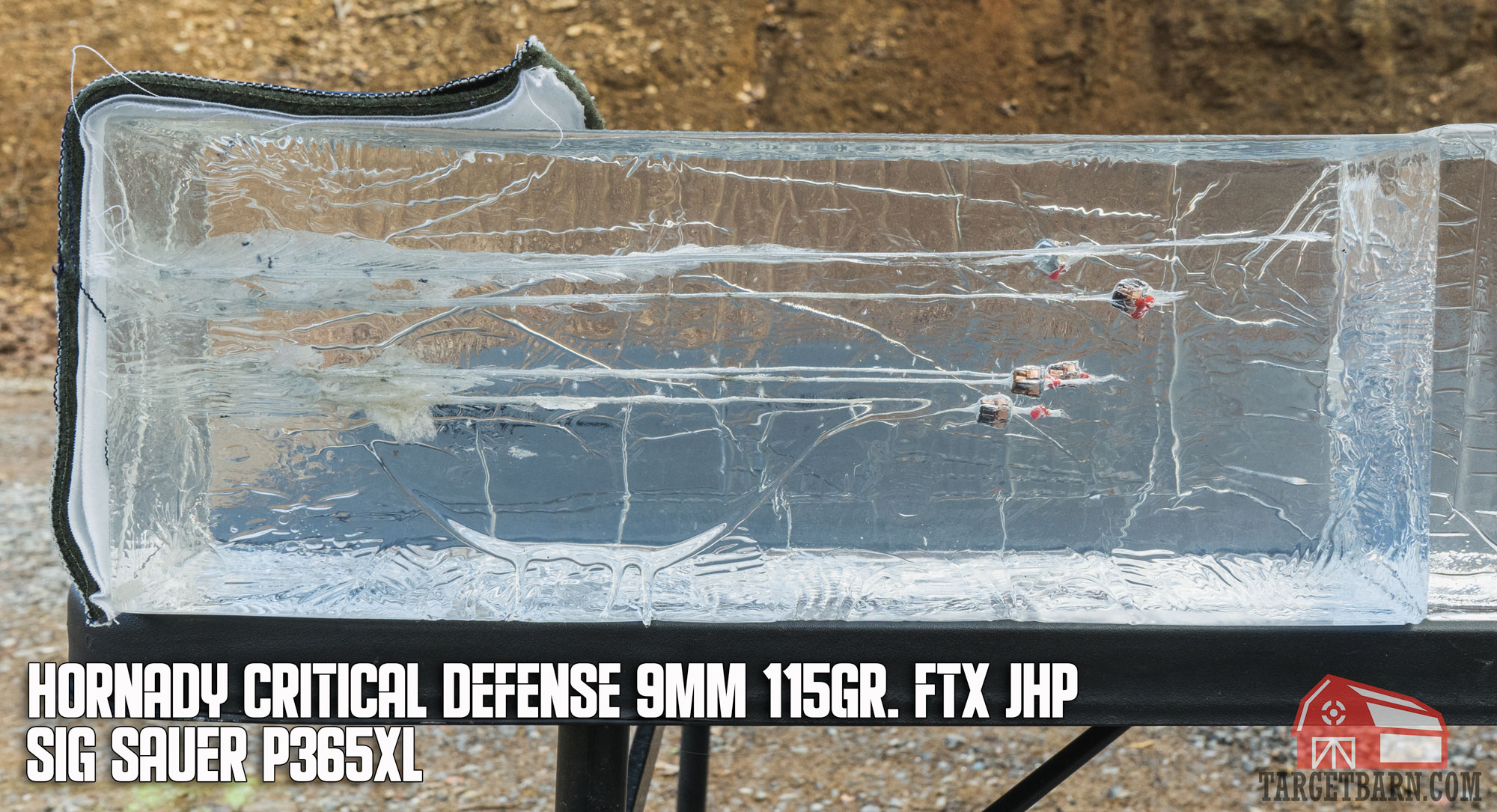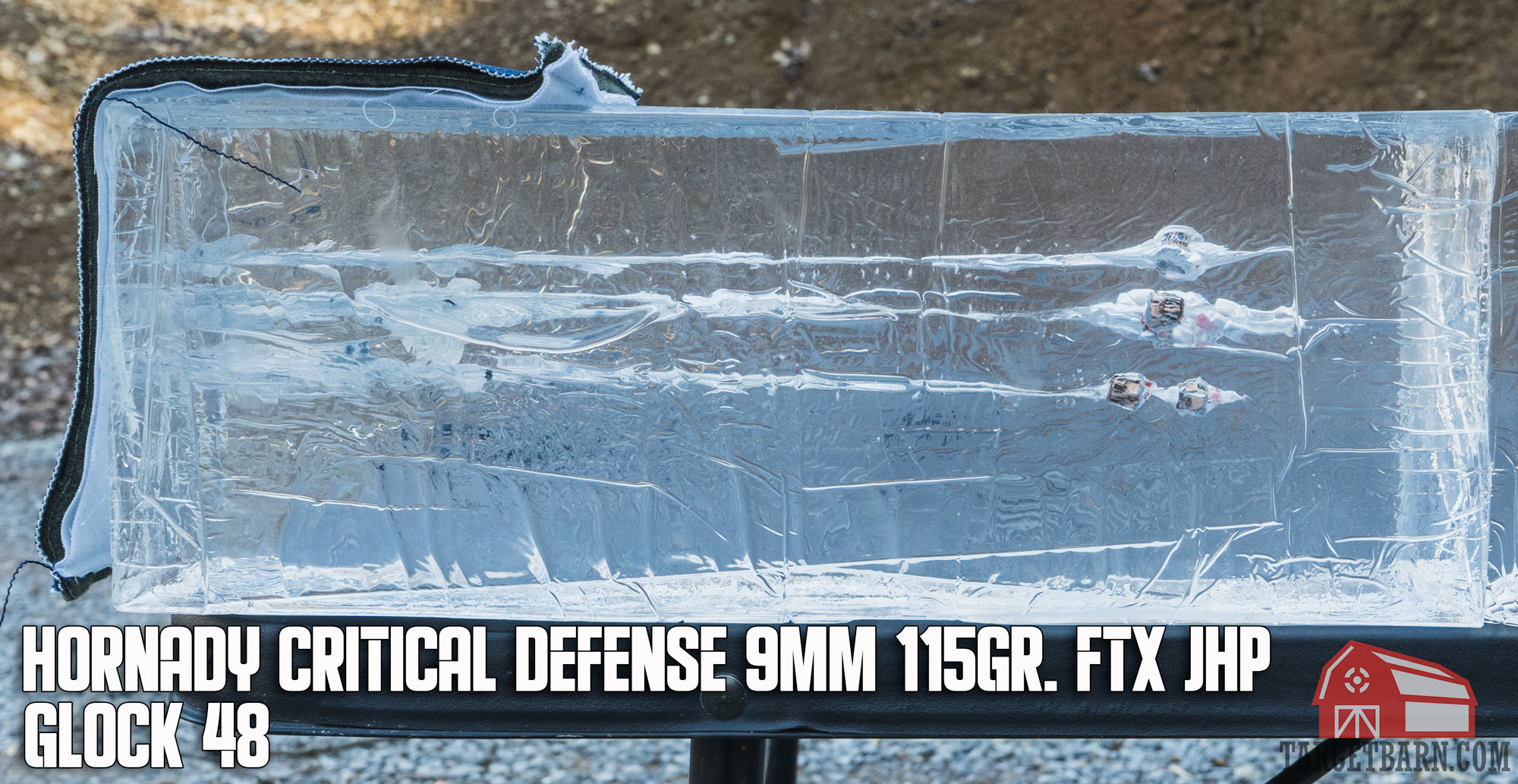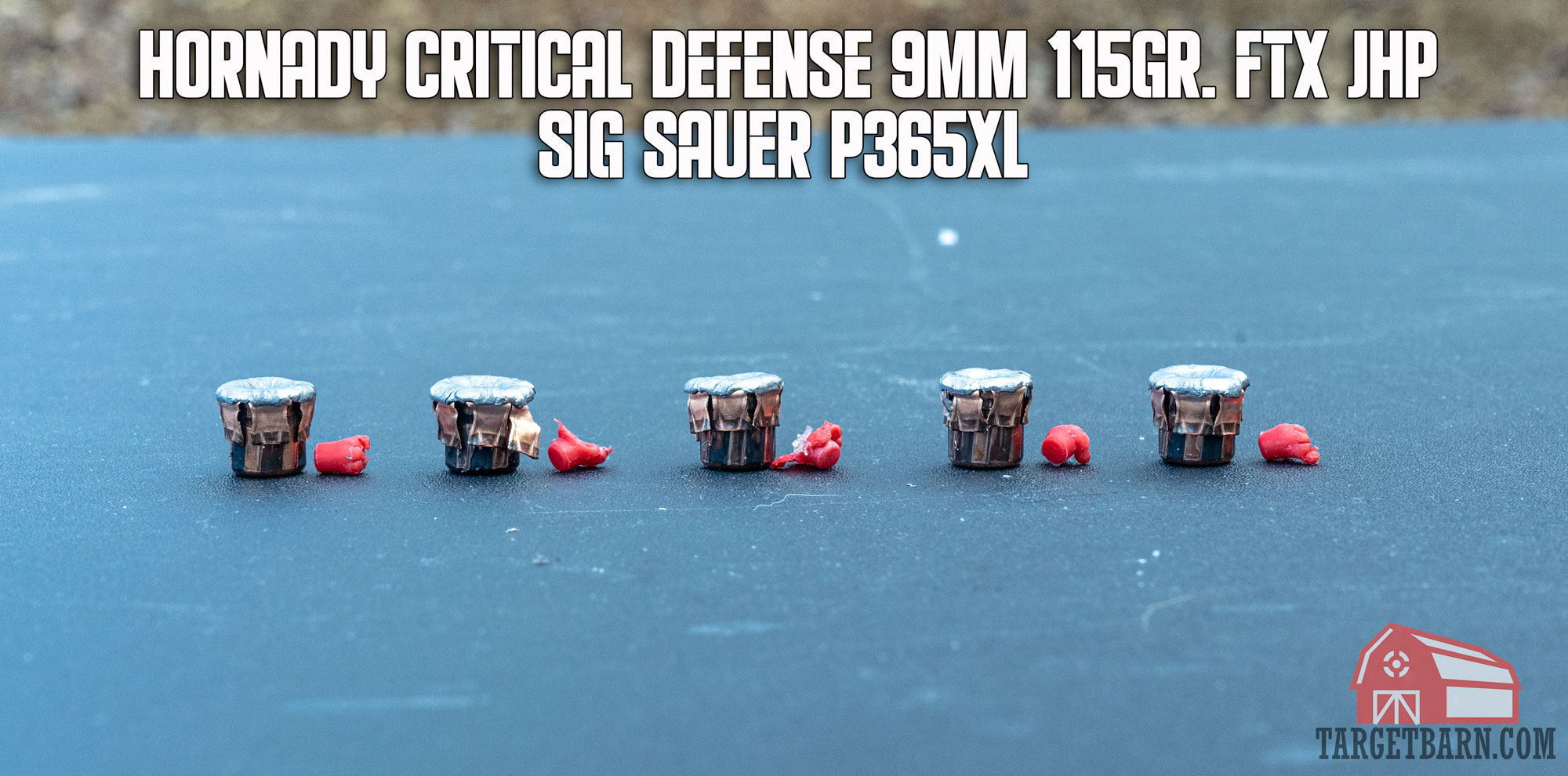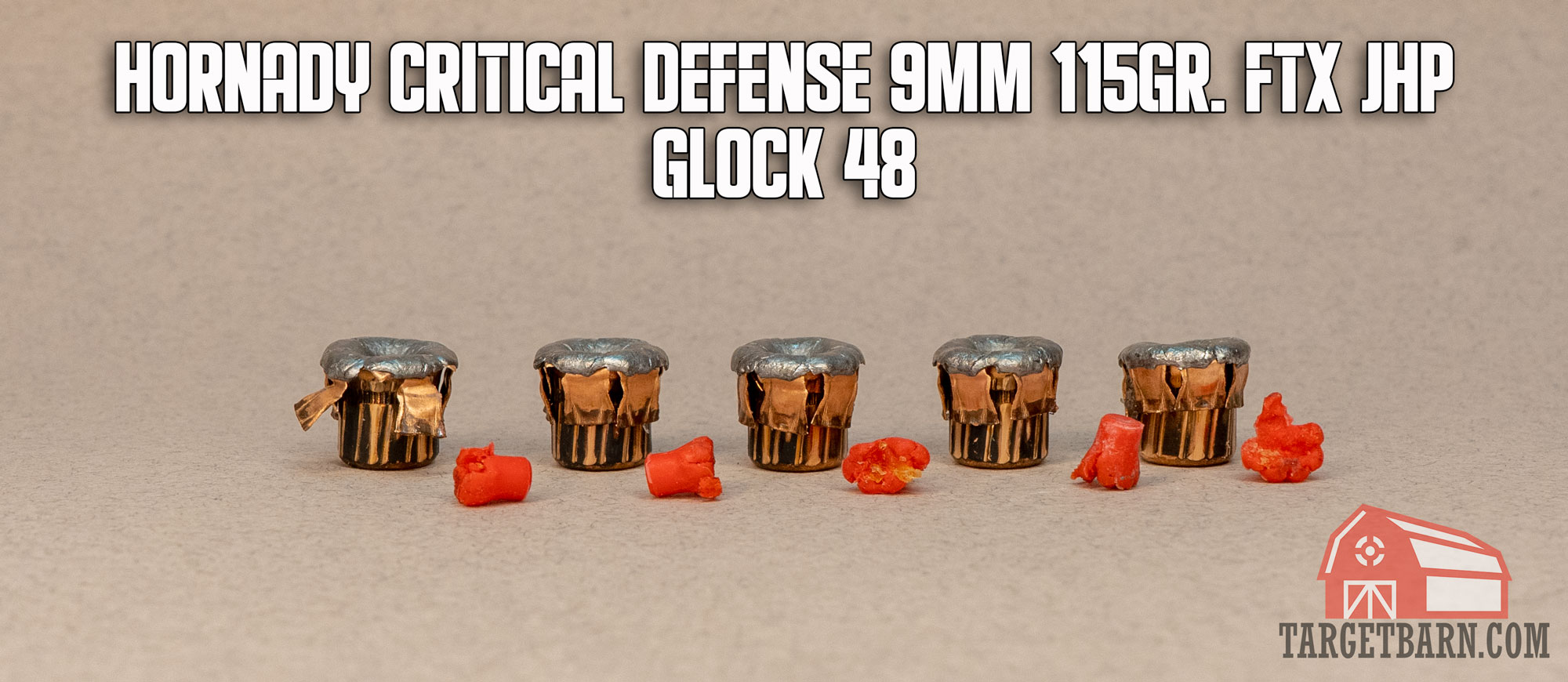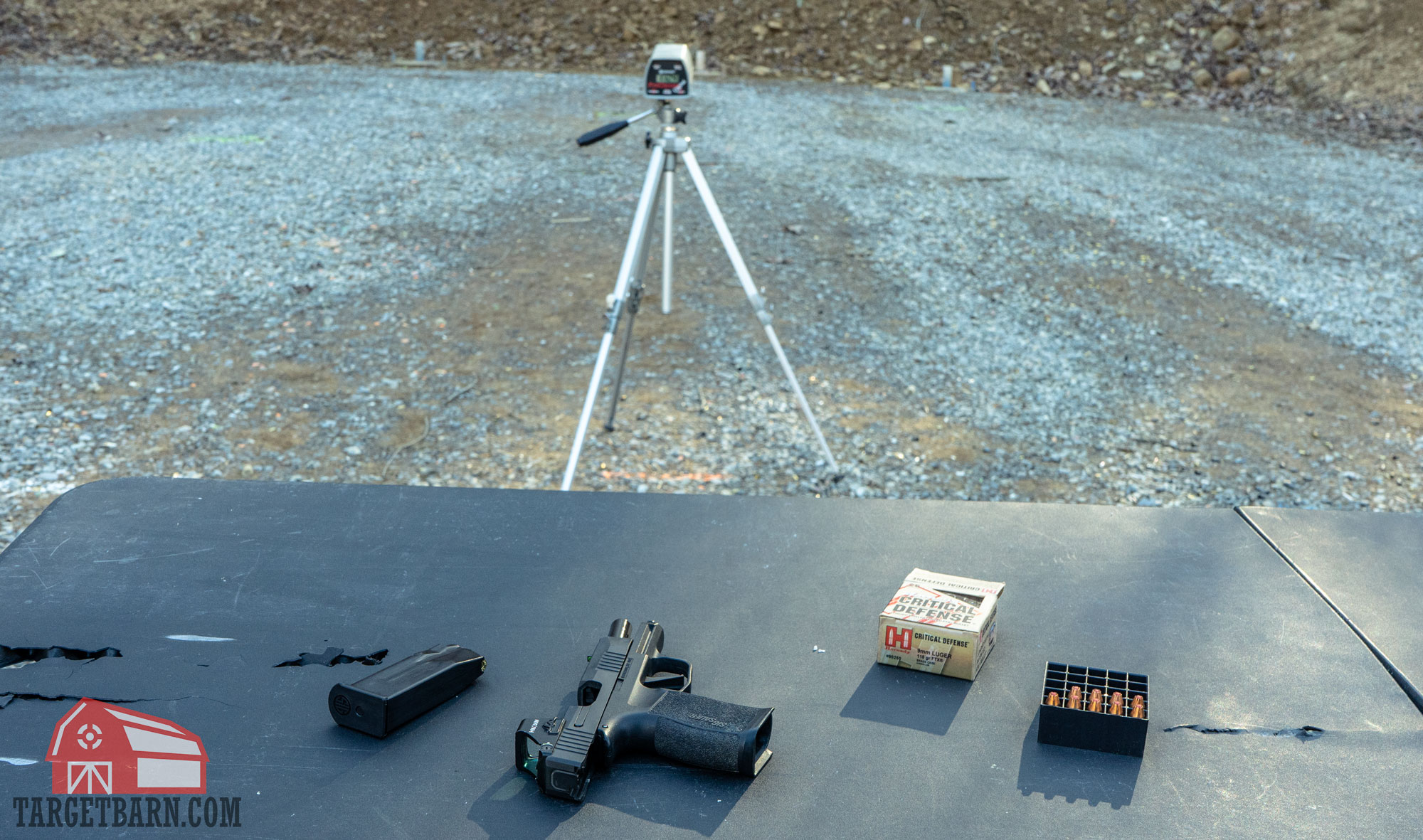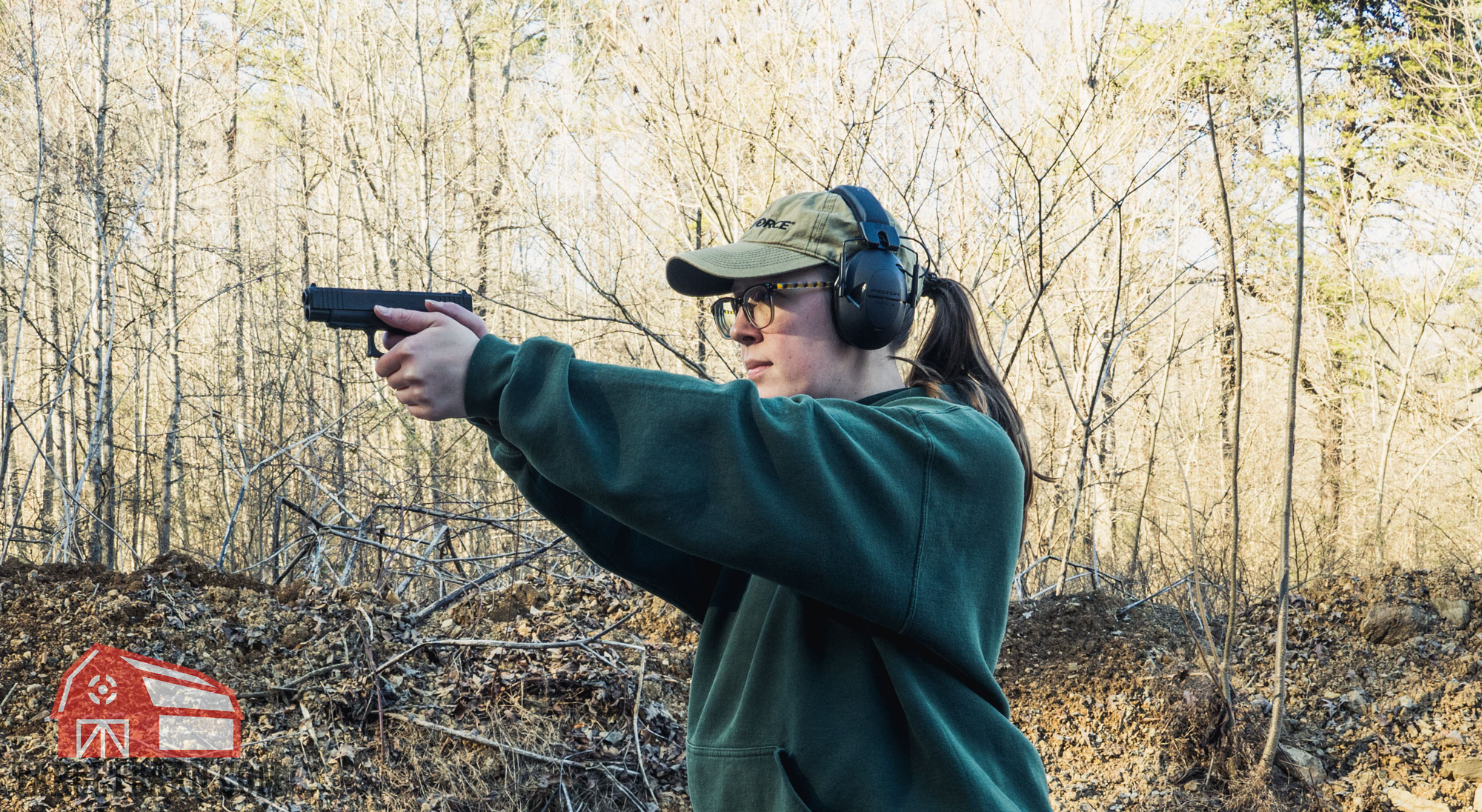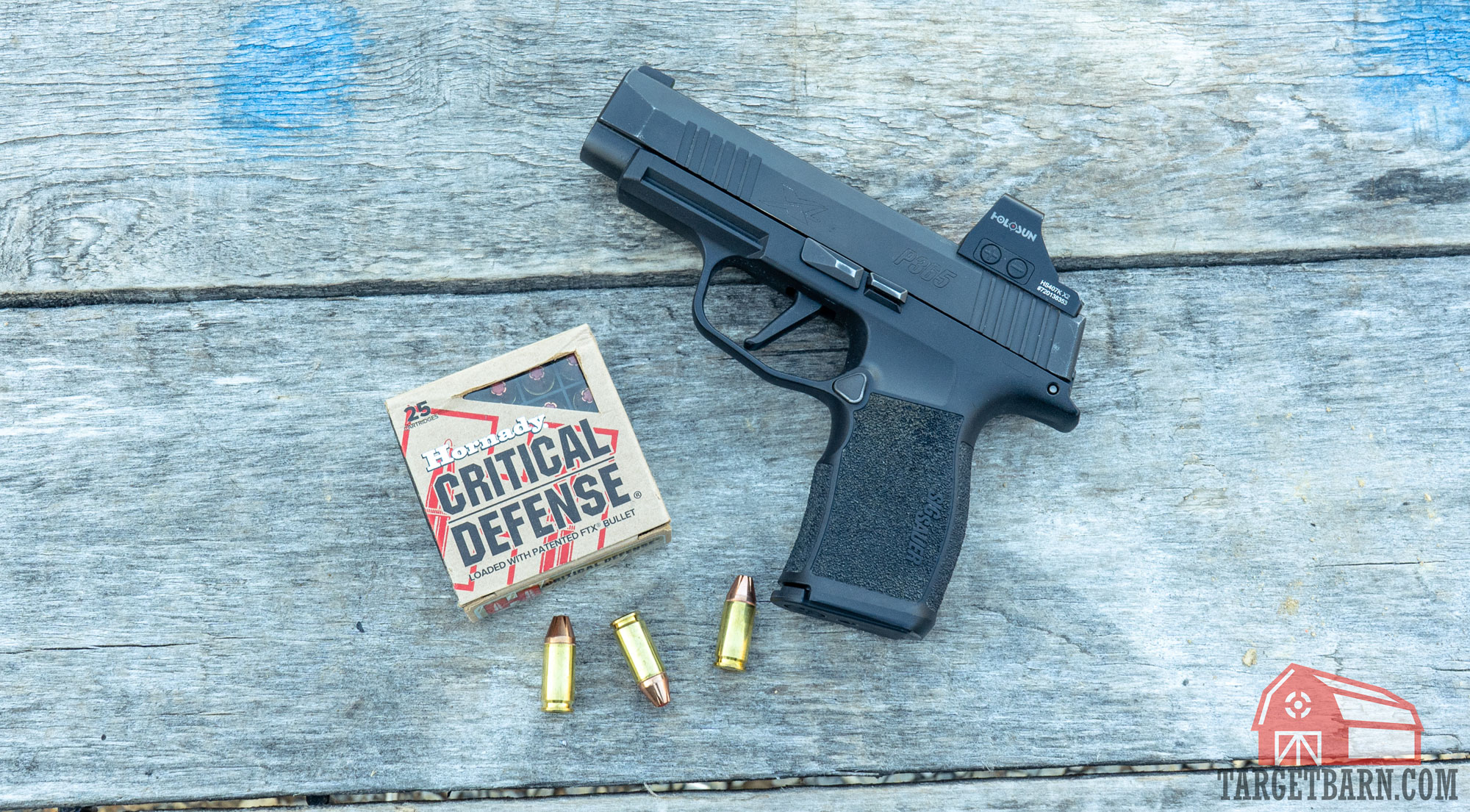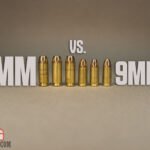If you’re in the market for a self defense round for your 9mm pistol, it’s likely that you’ve come across the Hornady Critical Defense 9mm JHP round.
Choosing a self defense round that you can trust your life with is no menial task. There’s a wide selection of 9mm ammo on the market, so today we’re reviewing the Hornady Critical Defense 9mm round to see how it stacks up for self defense.
Hornady Critical Defense 9mm Review: Quick Takeaways
Some key takeaways about the Hornady Critical Defense 9mm:
- Tends to penetrate on the shallow end of the 12″-18″ penetration standards
- Doesn’t consistently expand to 150% its original diameter, but is not prone to clogging in heavy fabric either
- Not designed to work through intermediate barriers like auto glass and dry wall
- Often runs reliably in guns that are sensitive to JHP ammo
- Exceptionally accurate and consistent
- Manageable recoil out of small carry guns
Hornady Critical Defense 9mm 115 Grain FTX: Specs & Design
Hornady designed their Critical Defense line of ammo as a reliable self defense option for shooters, using their Flex Tip eXpanding (FTX) projectile. The company originally designed the FTX bullet for use in lever guns to solve issues that traditional hollow points faced. Hornady claims the FTX bullet, which features a soft, red tip at the front of the bullet, expands reliably and doesn’t clog in heavy clothing and other barriers – a common issue with other hollow point bullets.
The Critical Defense round uses a 115gr. bullet that travels at velocities between 1,000 and 1,050 fps. The round is designed for civilian use in smaller carry pistols with short barrels. Not to be confused with Hornady’s Critical Duty line, which is geared towards law enforcement and full sized guns, as we’ve previously covered in our Critical Duty vs. Critical Defense Comparison.
The original design of the round calls for a nickel-plated casing, but due to supply chain restraints, Hornady suspended use of the nickel-plated casings in 2021. While this was supposed to be a temporary change, it has lasted for over two years.
Hornady Critical Defense 9mm Ballistics
| Gun | Barrel Length | Average Velocity | Average Penetration | Average Expansion | Average Muzzle Energy |
|---|---|---|---|---|---|
| Sig P365XL | 3.7" | 1117 fps | 11.375" | .462" | 319 ft/lbs |
| Glock 48 | 4.17" | 1116 fps | 13.0625" | .487" | 319 ft/lbs |
Now, let’s take a look at how the Hornady Critical Defense 9mm performs ballistically.
To measure this, we can shoot the round in ballistic gel, similar to how the FBI performs their ballistic testing. For our test, we used Clear Ballistics 10% synthetic ballistic gel with a 4-layer fabric covering. We fired rounds from a 10-foot distance, in line with the FBI’s testing protocol.
We tested five rounds out of two different pistols (total 10 rounds): the Sig Sauer P365XL with a 3.7” length barrel and the Glock 48 with a 4.17” barrel length. Our test included different barrel lengths because the barrel length can affect velocity which in turn affects how the bullet performs upon penetration.
We’ll look at penetration and expansion of each round to evaluate how it might perform in a real world scenario. For a deeper look at how a round stops an attacker, check out our post on the deeply misunderstood stopping power.
Penetration
The FBI’s standards call for a penetration depth between 12” and 18”. This correlates with rounds that adequately penetrate soft tissue and reach vital organs and structures, yet don’t over-penetrate and completely pass through the intended target.
We want a round that reliably penetrates deep enough to hit vital organs in order to incapacitate an attacker. It must do that after passing through a 4-layer fabric covering which simulates a heavy jacket and other clothing.
With the P365XL, our average penetration depth was 11.375”. Two of the rounds came in just under 12”, while the other three rounds penetrated slightly above 12”. The rounds fired out of the Glock 48 performed slightly better, with an average penetration of 13.0625”, and all rounds reaching the minimum of 12”.
These results were not surprising to us. The Hornady Critical Defense 9mm tends to penetrate on the shallow side of the 12”-18” range.
Expansion
Next we’ll look at bullet expansion. Because most self defense rounds use hollow point bullets, they should expand upon penetration. We want a round that adequately expands because this causes tissue disruption and a larger wound channel, making the round more likely to stop an attacker. Bullet expansion also prevents over-penetration, which could result in a bystander being hit by the traveling round.
There is no standard for expansion, but ballistic experts generally look for an expanded diameter of 150% of the original diameter of the bullet. That means for the 9mm, we’ll look for an expanded diameter of .533”. We’ll dig the expanded bullets out of the gel in order to measure them.
Unfortunately, the Critical Defense does not show the best expansion. With the P365XL, the average expansion was .462”, with none of the rounds expanding at least 150%. The average expansion out of the Glock 48 was .487”, with only one round expanding over 150%.
That being said, all rounds did expand, and you can even see the red tips that prevent clogging.
Velocity
We also measured the muzzle velocity of the Critical Defense round. Our velocity readings came in slightly slower than the advertised 1135 fps Hornady advertises for 4-inch barrels.
The velocities of Critical Defense out of both guns were incredibly consistent. The rounds out of the P365XL had an average muzzle velocity of 1117 fps. Out of the Glock 48, the average muzzle velocity was 1116 fps.
Intermediate Barriers
The biggest downfall of the Hornady Critical Defense is its performance in intermediate barriers.
Intermediate barriers can be anything you have to shoot through to hit something on the other side. Examples of intermediate barriers include auto glass, car doors, drywall, and more.
The Critical Defense round is not barrier blind, meaning it is not designed to expand upon penetration of soft tissue after passing through an intermediate barrier. It can be argued that the average concealed carrier likely doesn’t need a barrier blind round. However, if you think you are likely to get into a self defense encounter that requires shooting through intermediate barriers, the Critical Defense shouldn’t be your first choice.
Hornady Critical Defense 9mm Shooting Performance
Now, let’s take a look at the Hornady Critical Defense 9mm’s reliability, accuracy, and recoil performance.
Reliability
One of the advantages to the Critical Defense round is its reliability. Some guns struggle with reliably feeding some JHP ammo because of the bullet shape. The Critical Defense tends to not have this issue, reliably feeding in even picky guns.
Accuracy
Another advantage of the Critical Defense is its accuracy. The FTX bullet that the Critical Defense uses has a reputation for its accuracy.
The FTX bullet is based off of Hornady’s XTP bullet. The XTP bullet is popular among competition shooters for its extreme accuracy, so it’s no surprise that the FTX bullet has excellent accuracy as well.
Recoil
Having manageable recoil is an important factor when selecting self defense ammo. If the recoil is too harsh, the shooter may struggle with accurate follow up shots.
While felt recoil has a number of different factors, including gun size and the shooter’s technique, the ammo plays a big part.
Out of a smaller, lightweight gun like the Sig P365XL, the Critical Defense has fairly mild recoil. Shooting powerful rounds out of a small gun can be uncomfortable, but the Critical Defense is not one of those rounds.
So, if you’re worried about harsh kick back, the Critical Defense may be a viable choice for you.
Final Thoughts
The Hornady Critical Defense rounds gets a lot of hate, mostly because it is not designed to perform well when passing through intermediate barriers like auto glass and dry wall. It is not a duty round, and it is not designed to be. Plus, it can be argued that the general population is not likely to encounter a situation that requires a round that defeats intermediate barriers.
Critical Defense is a reliable round, with incredible accuracy and consistency. It tends to penetrate and expand on the shallow side, but is certainly not the worst performing round out there. The round also offers mild recoil out of smaller guns, which can be a huge factor in follow up shots.
When we covered the best 9mm ammo, we ranked the Federal Premium Law Enforcement 147gr. HST JHP as our top self defense round. Sometimes, though, finding it in stock can be an issue. The Hornady Critical Defense 9mm is consistently in stock and easy to find. If in a pinch, the Critical Defense 9mm will make a reliable choice for self defense. Just be sure you run a couple magazines of the round through your gun first to ensure it functions well.

